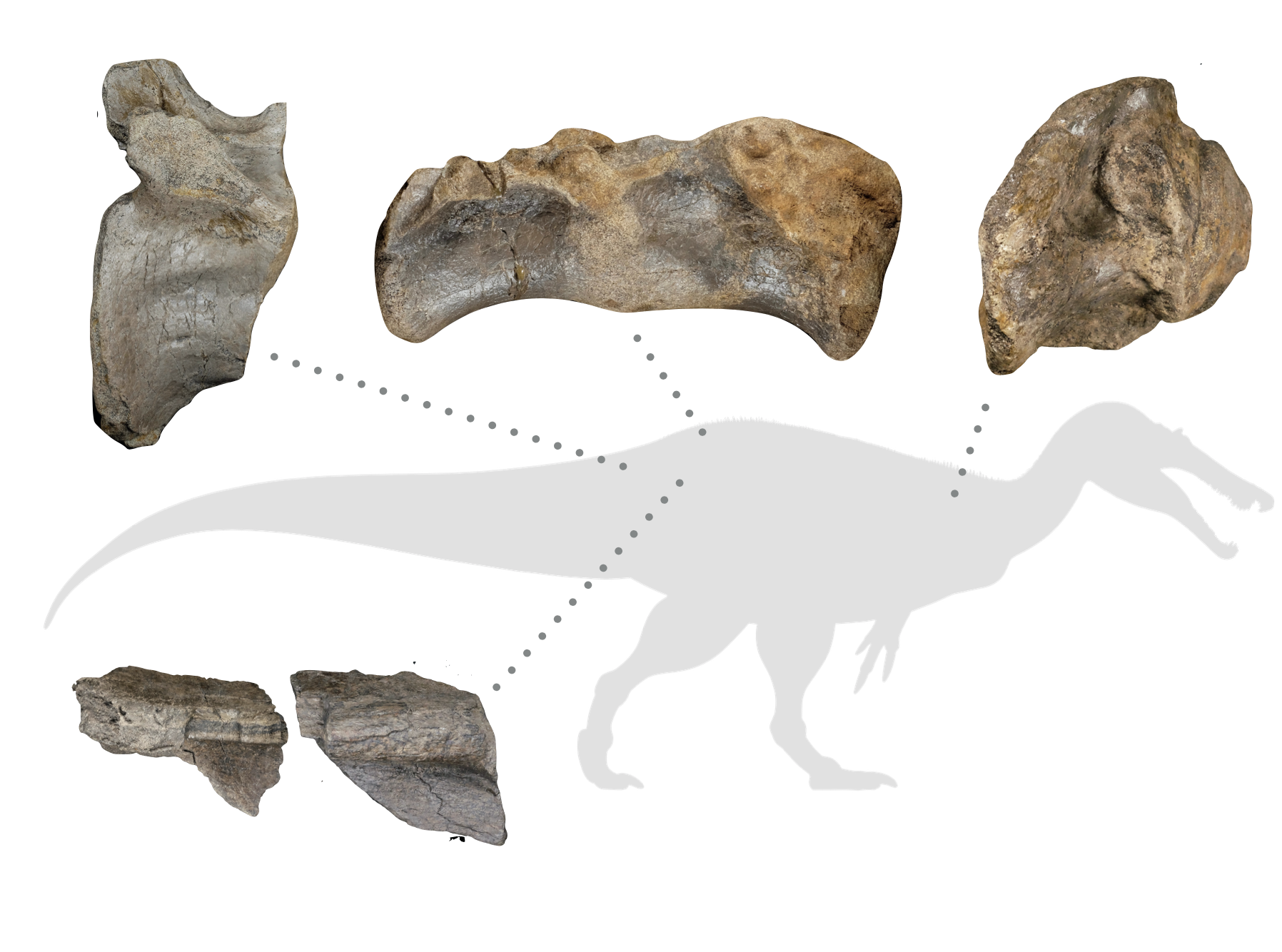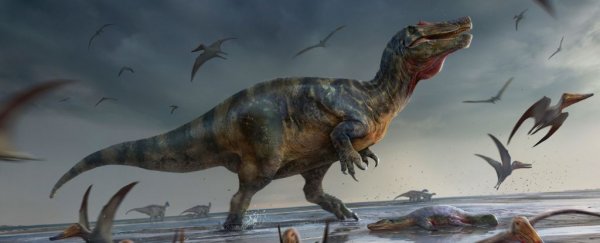Scientists have found evidence of what might have once been the largest terrestrial hunter in Europe, thanks to a fossil discovery on an island off the south coast of England.
Paleontologists suspect the remains of a huge two-legged carnivore, recently unearthed on the Isle of Wight, might be the largest theropod discovered on the continent to date.
The only rival is a possible megalosaurid known from an unpublished description of a large vertebra uncovered in the Jurassic geology of France.
Theropods were a dominant clade of dinosaurs that included tyrannosaurs, megalosaurs, velociraptors, and spinosaurs. During the Early Jurassic, these ancient creatures were the only large, land-based carnivores around, and Spinosauruses were probably the longest and largest of the lot.
In the ancient river beds of northern Africa, Spinosaurus fossils can reach epic proportions, indicating a body length of more than 15 meters (49 feet) and a body mass over 13 metric tons.
The fossils from the Isle of Wight are not quite that large, but according to the authors, they look to be larger than any other Spinosaurus fossil found in southern England or southwest Europe.
"This was a huge animal, exceeding 10 m in length, and judging from some of the dimensions, probably represents the largest predatory dinosaur ever found in Europe," says paleontologist Chris Barker from the University of Southampton.
"It's just a shame it's only known from such scant material."
Spinosaurus fossils are incredibly rare. Only three suspected species have been found so far on the Isle of Wight, and they were only discovered in the last couple of years.
Barker and his colleagues suspect their latest discovery on the southwest coast is its own distinct species, although it's hard to say with such limited remains.
The bones from the dinosaur's pelvis and tail indicate it was enormous, and the webbing on its vertebra are suggestive of the Spinosaurus genus.
The environment in which the fossils were found also aligns with what we know of Spinosauruses. The rock the fossil was buried in is all that remains of a once sandy lagoon, in which the predator probably fished.
If the dinosaur was anything like other spinosaurs at the time, it might even have been a capable swimmer.
 The suspected Spinosaurus fossils found on the Isle of Wight. (The University of Southampton)
The suspected Spinosaurus fossils found on the Isle of Wight. (The University of Southampton)
For now, the authors have tentatively named the dinosaur the "White Rock spinosaurid" for its suspected clade and the sandstone it was found in. But whether or not the remains belong to an unknown spinosaurid or another impressively large theropod remains up for debate.
"Because it's only known from fragments at the moment, we haven't given it a formal scientific name," says vertebrate paleontologist Darren Naish from the University of Southampton.
"We hope that additional remains will turn up in time."
The study was published in PeerJ.
